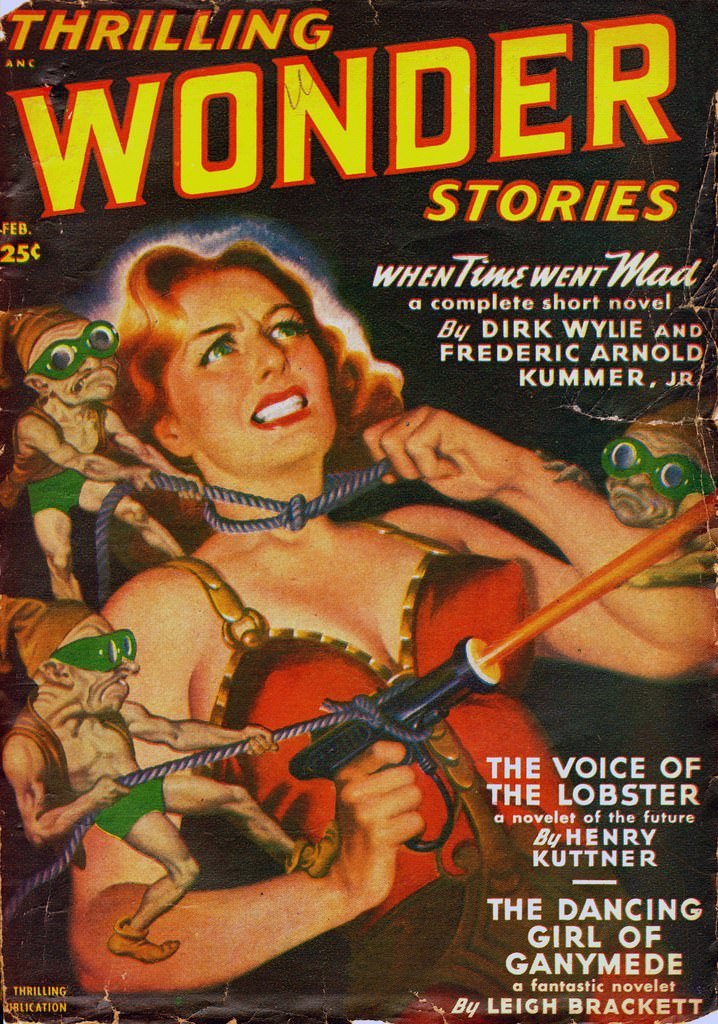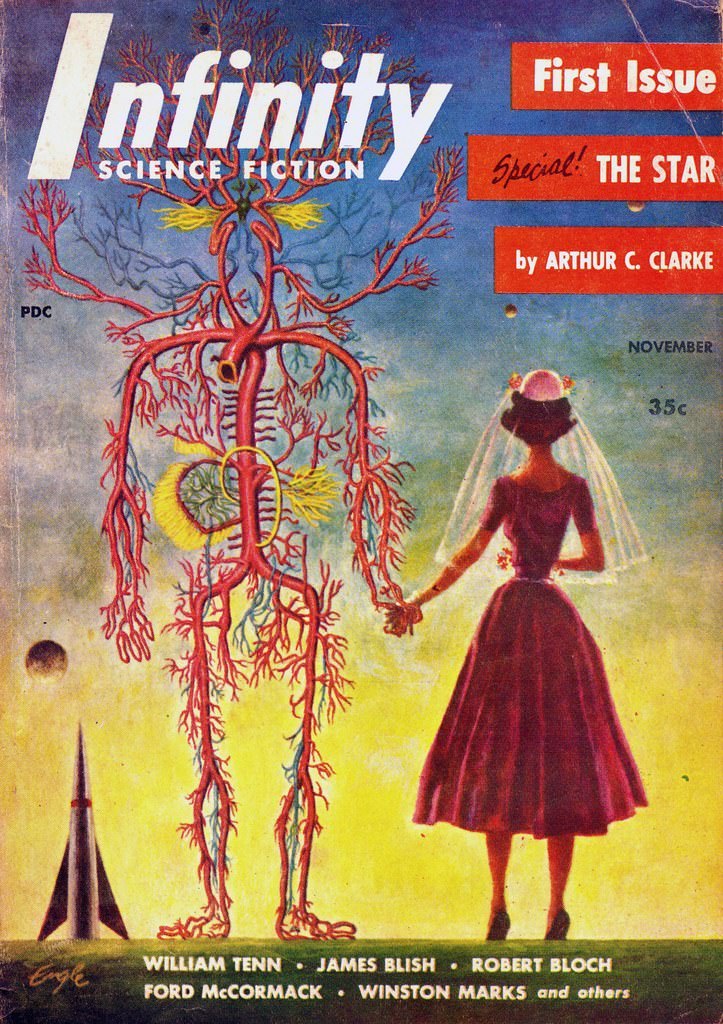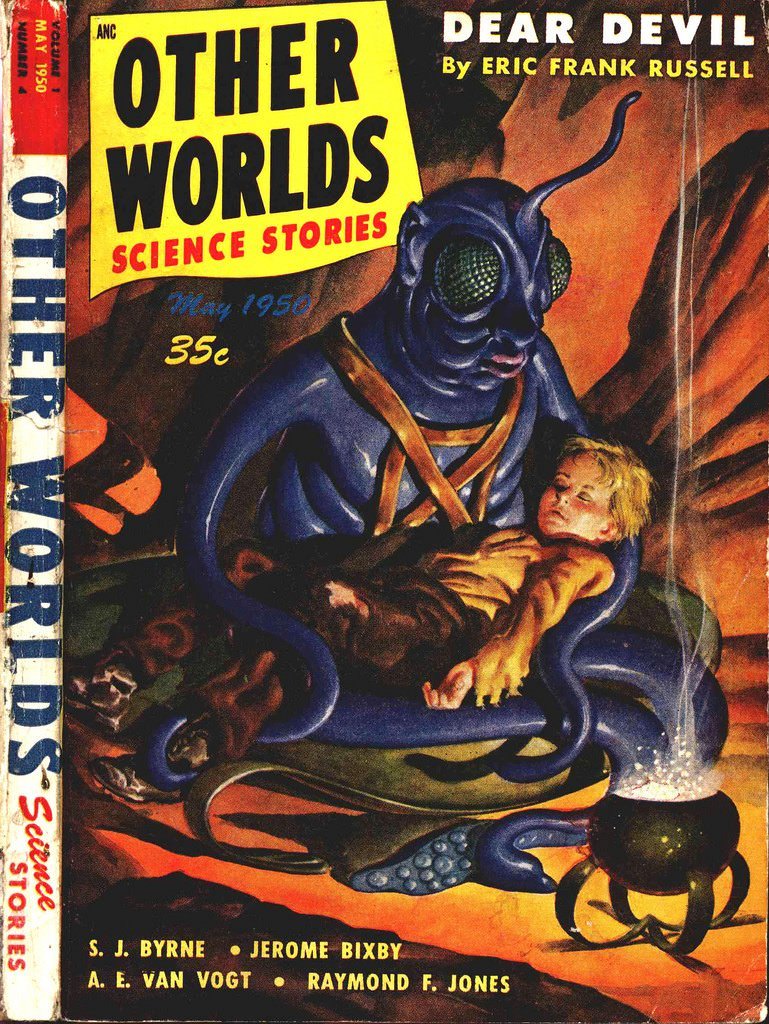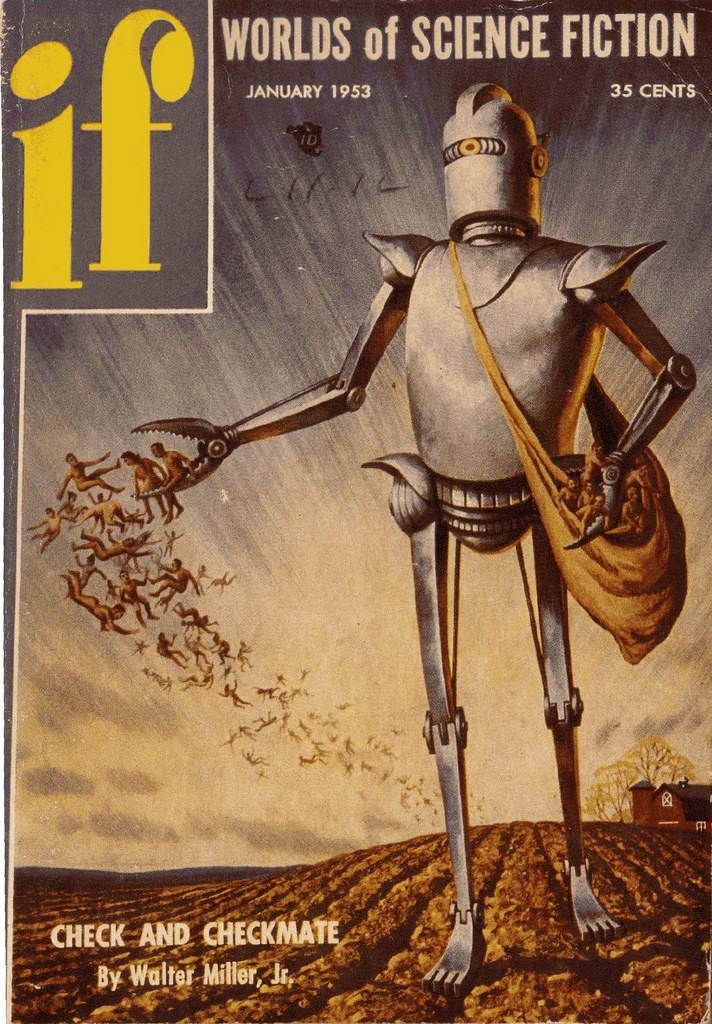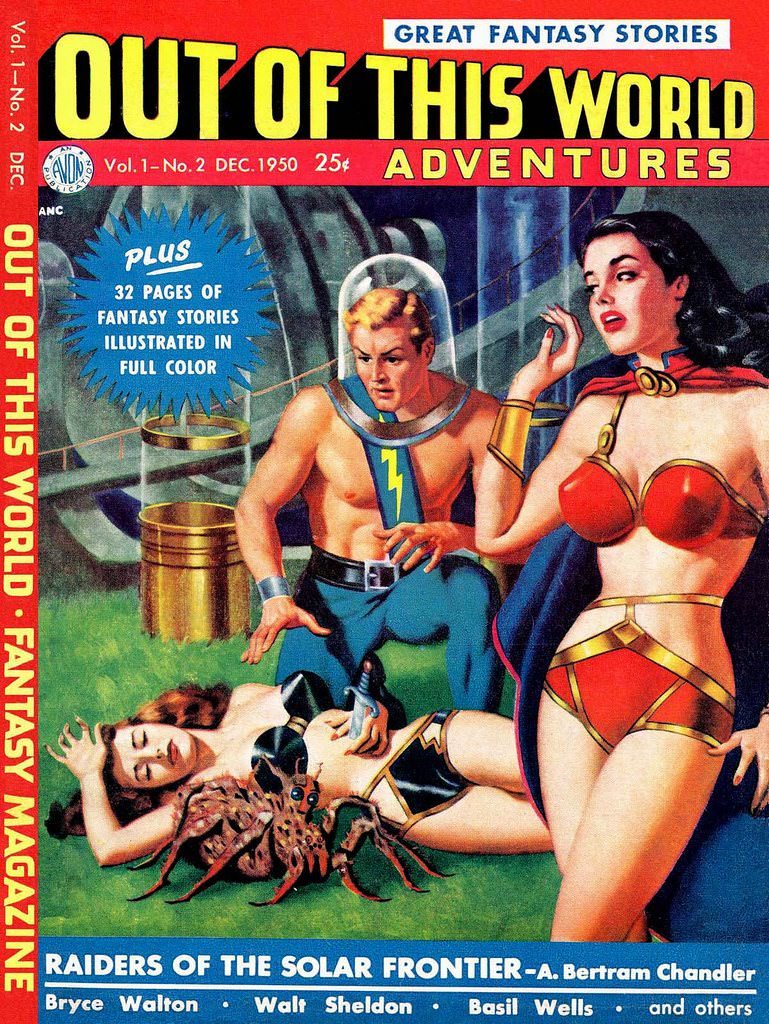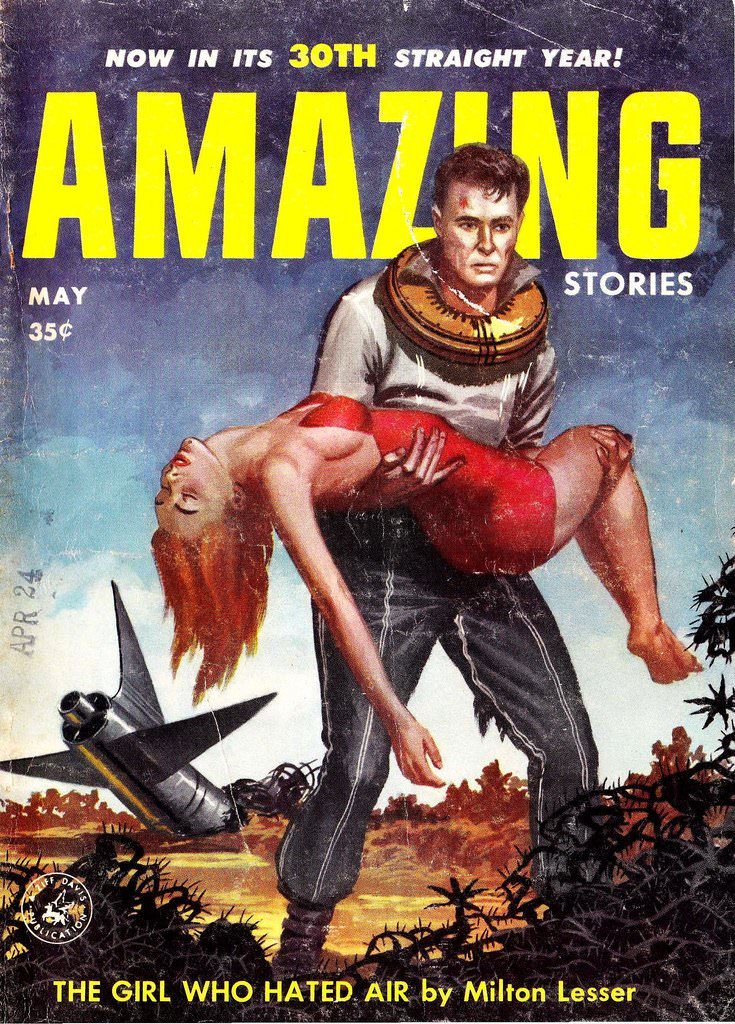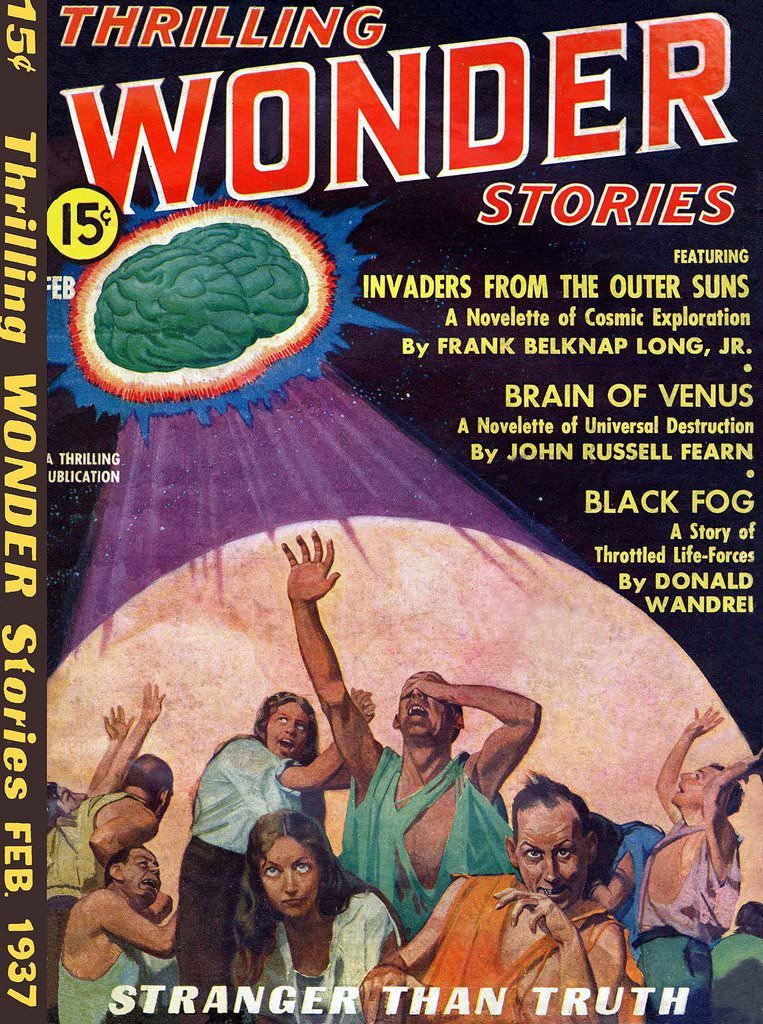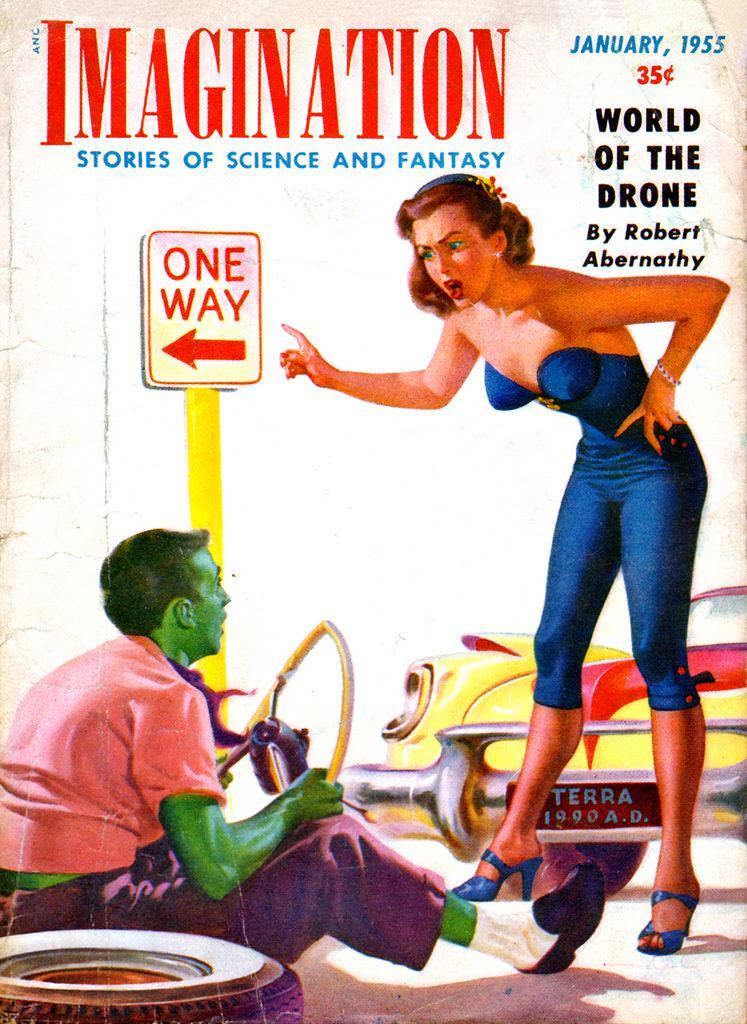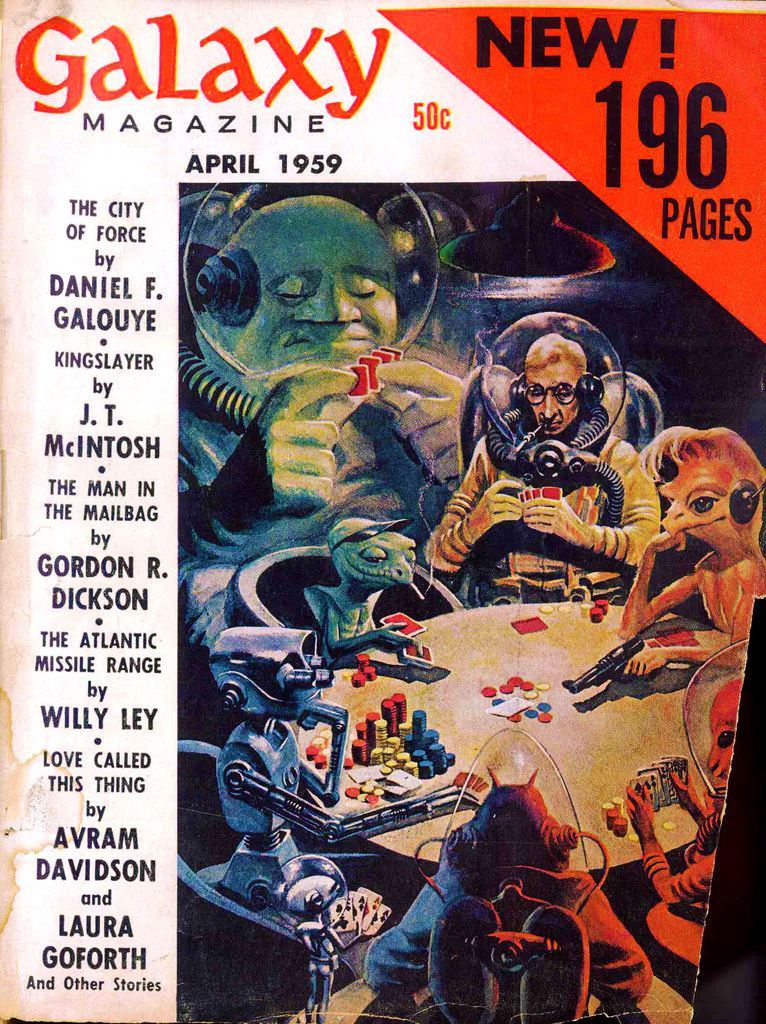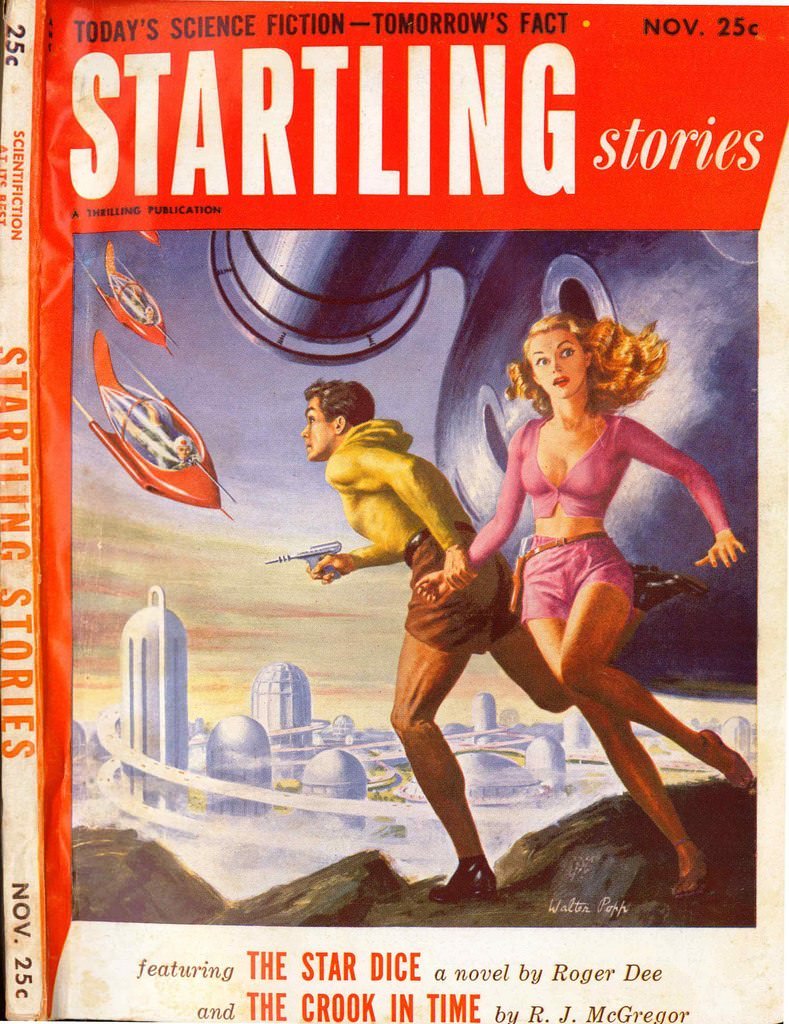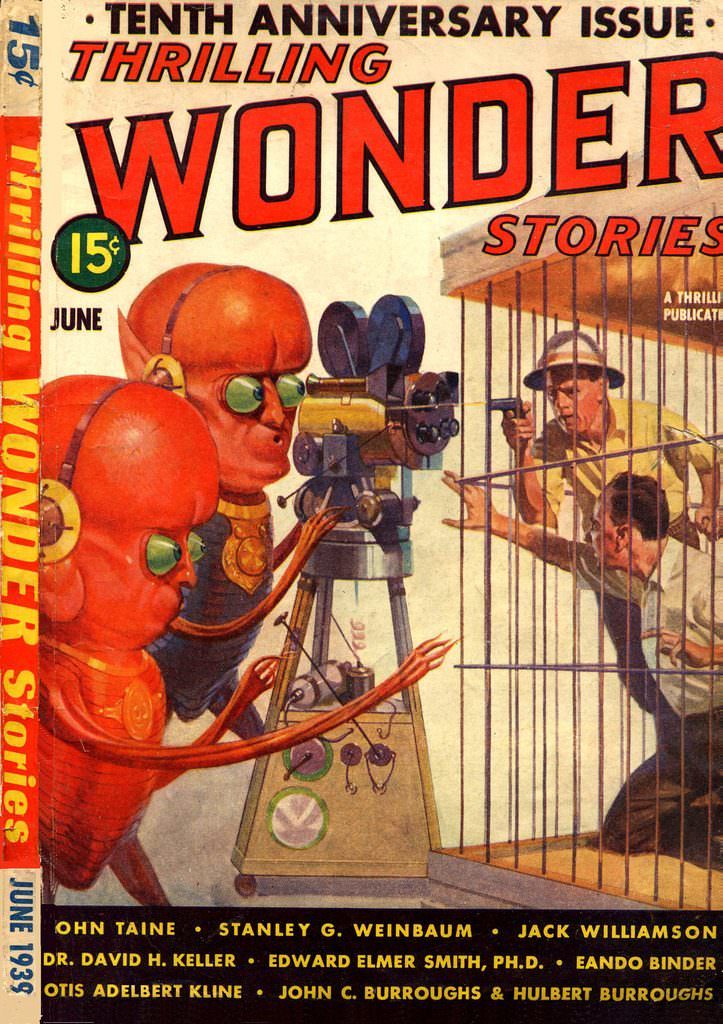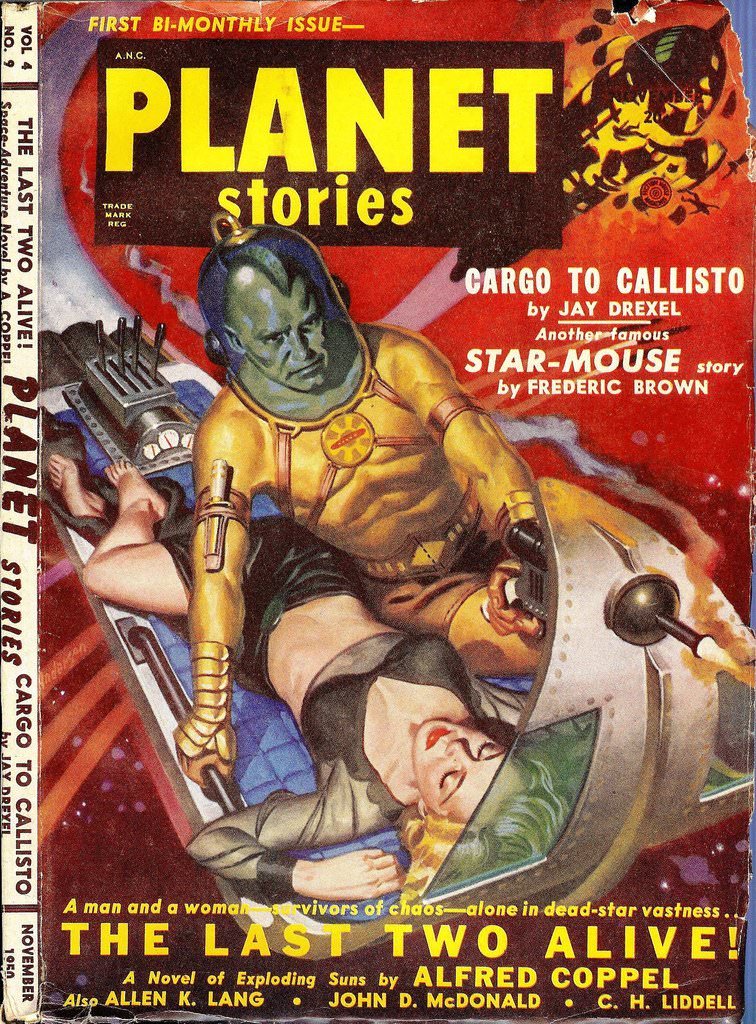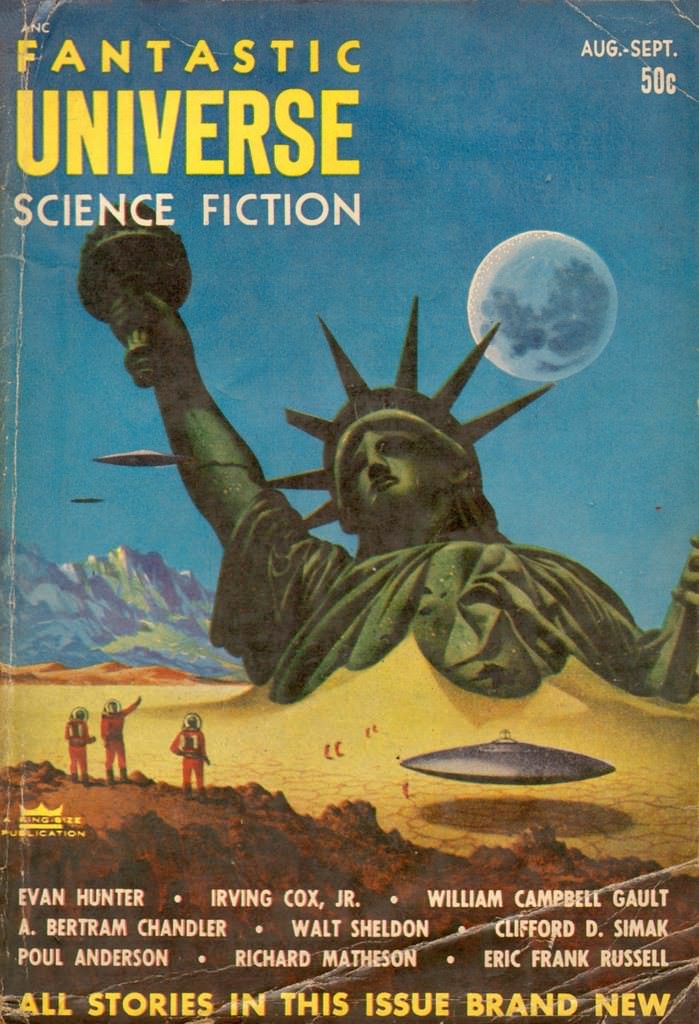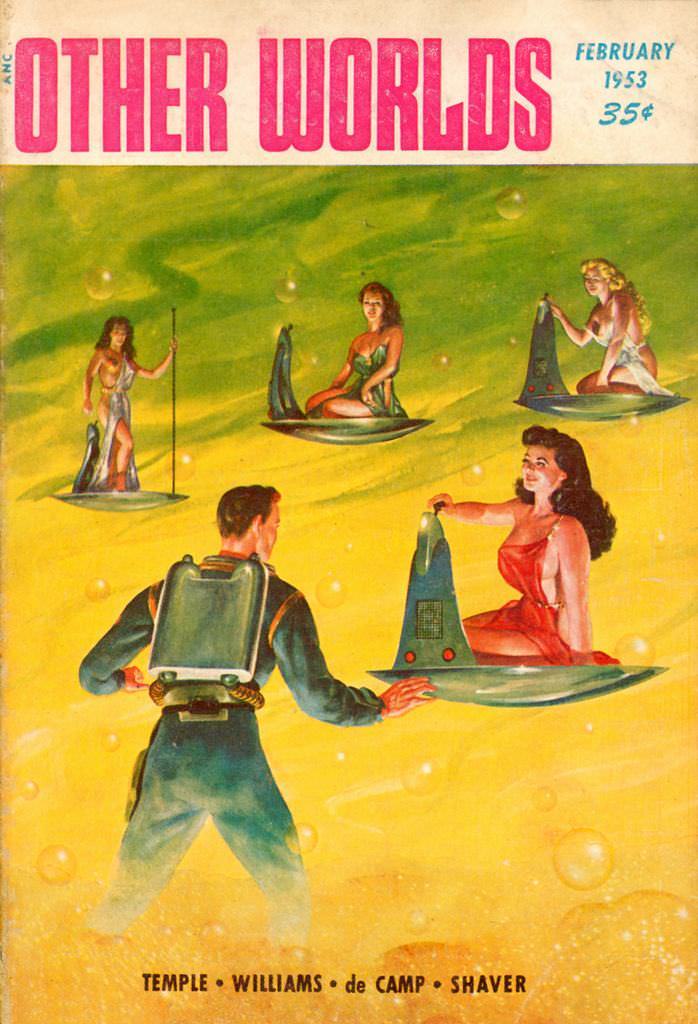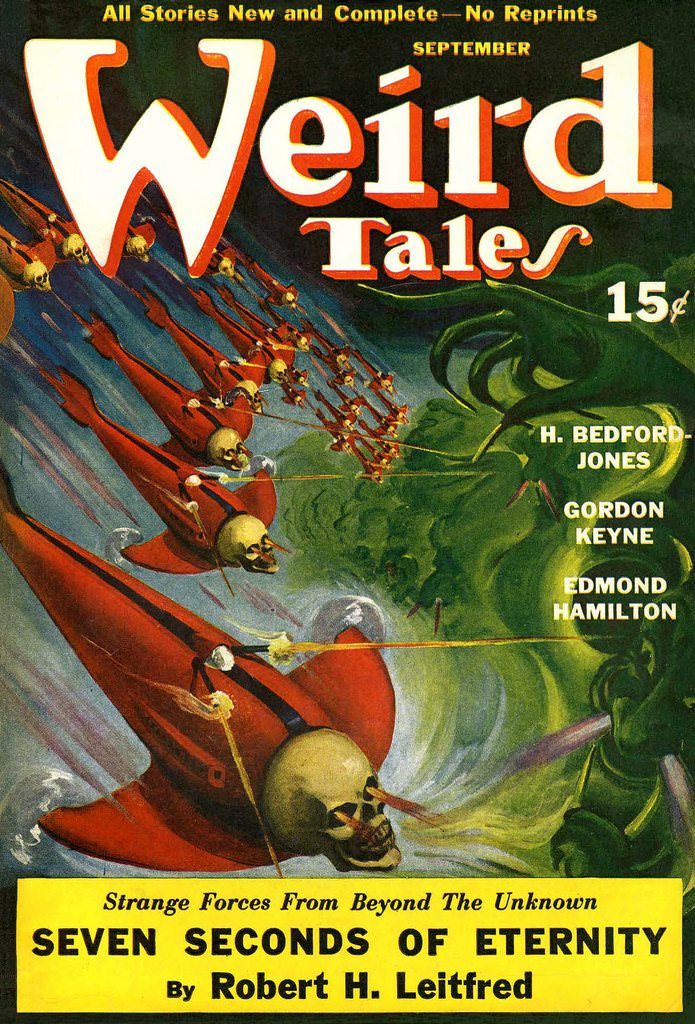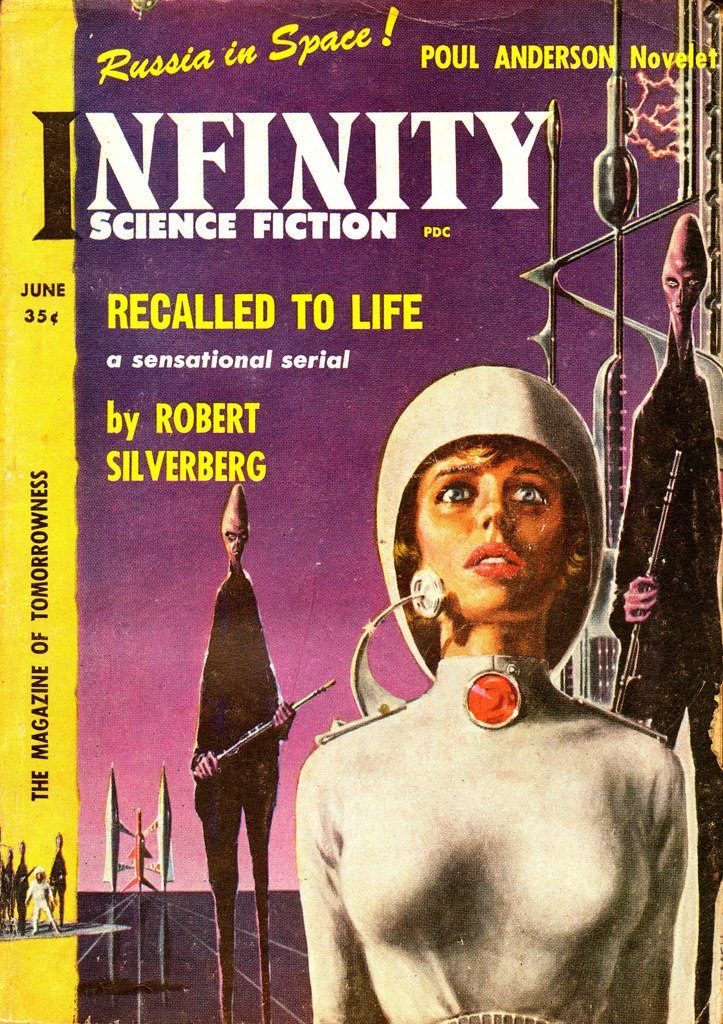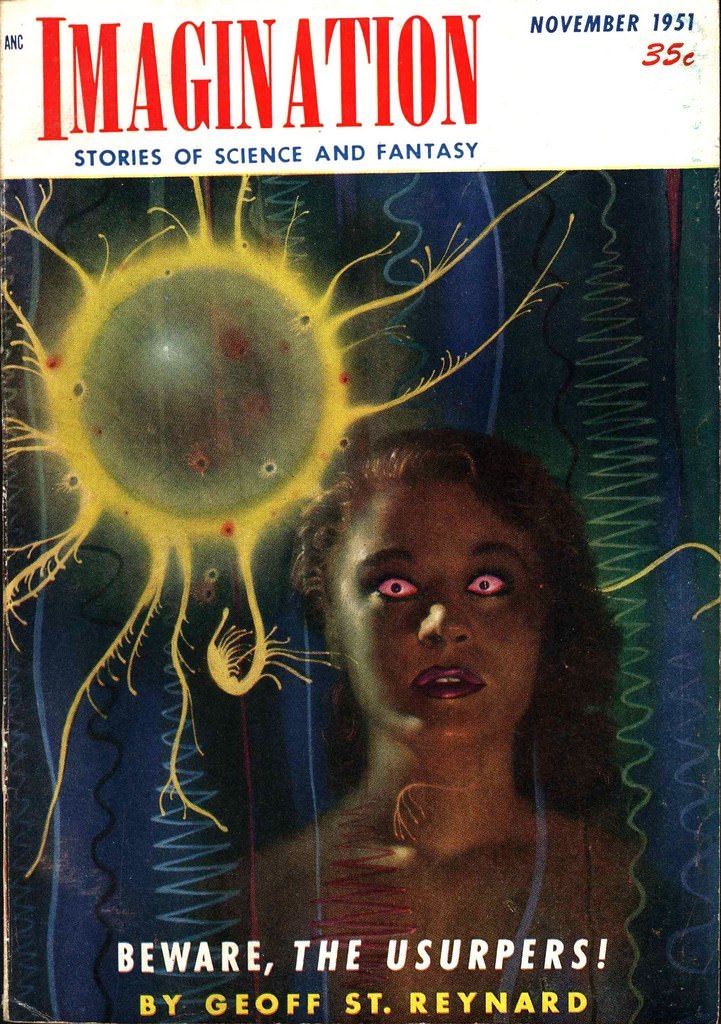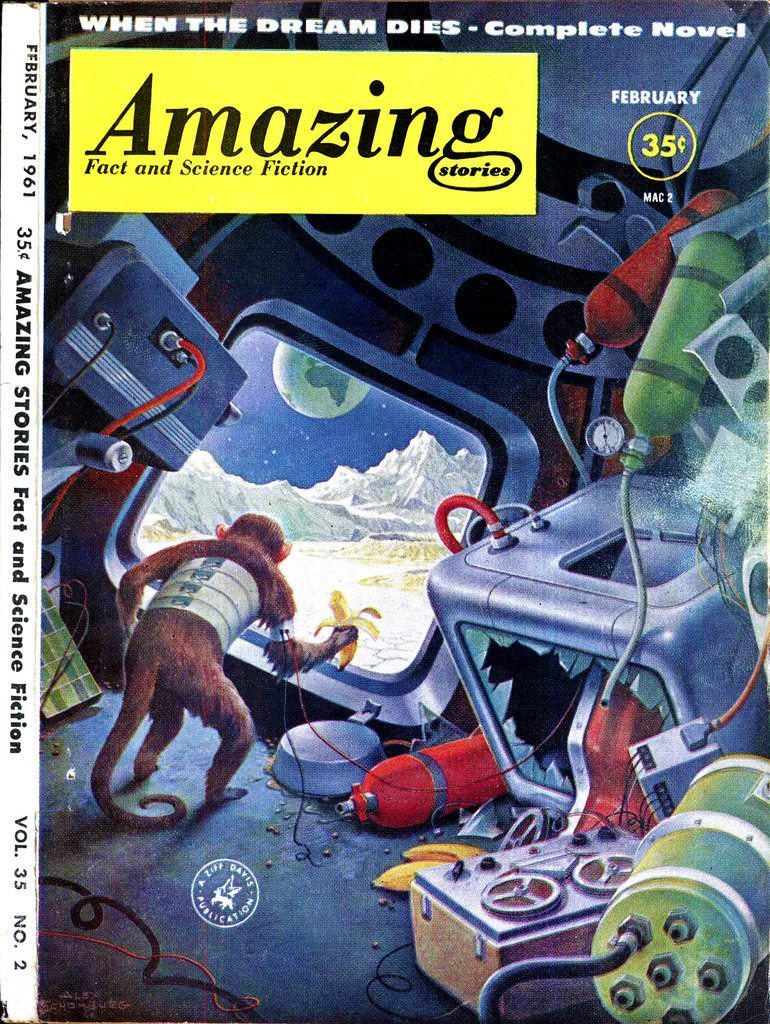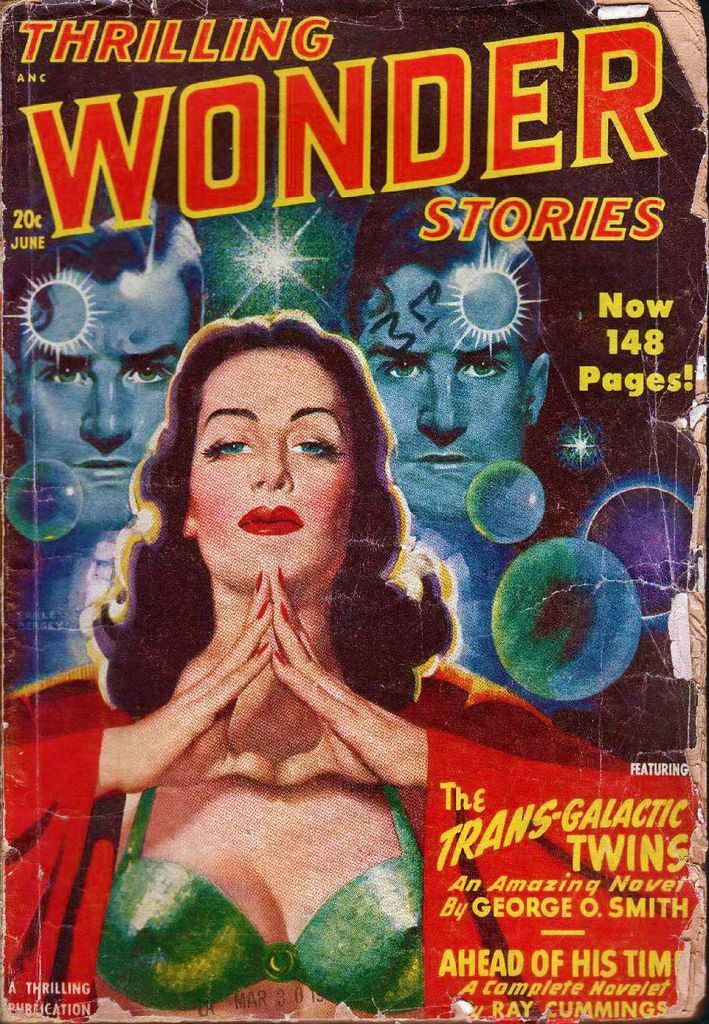In the middle of the 20th century, roughly covering the 1940s, 1950s, and 1960s, science fiction magazines known as “pulps” were very popular. These magazines got their name from the cheap paper they were printed on, but the stories inside transported readers to exciting future worlds and distant galaxies. A major reason these magazines sold so well was the artwork on their covers.
Mid-Century Sci-Fi pulp covers were known for being visually striking and full of energy. Their main job was to grab the eye of anyone walking past a newsstand filled with magazines. The artwork was designed to look thrilling and imaginative, hinting at the adventurous science fiction stories waiting inside.
A key characteristic of these covers was the use of bright, bold colors. Artists used vibrant palettes to make the covers stand out and look exciting. Deep space blacks were contrasted with brilliant oranges, reds, blues, and greens, creating images that were impossible to ignore.
The scenes depicted on the covers were almost always dynamic and action-filled. They showed moments of high adventure, danger, or discovery in futuristic settings. Common subjects included sleek, imaginative spaceships soaring through asteroid fields or landing on strange alien planets.
Read more
The covers were populated with characters that fit the exciting narratives. Brave, heroic figures, often appearing strong and determined, were frequently featured. They might be battling various types of alien creatures, which were depicted with diverse and sometimes menacing appearances. The covers also often included depictions of female characters, shown in adventurous or dramatic roles within the scene.
Futuristic technology was another common element. Ray guns, laser beams, and other advanced weapons or devices were often shown in action. The artwork brought to life the technological wonders and dangers that the characters would encounter in the stories.


